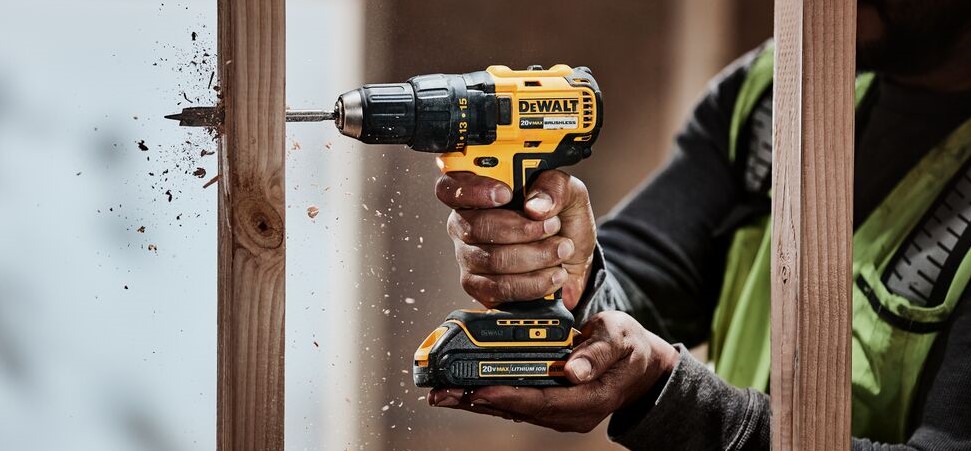Drilling a pilot hole is a crucial step in any woodworking or DIY project. It sets the foundation for accurate and clean drilling, preventing wood from splitting and ensuring your screws go in straight. Whether you’re hanging shelves or assembling furniture, knowing how to drill a pilot hole can save you time and frustration.
Importance of Drilling a Pilot Hole
Drilling a pilot hole ensures accuracy in woodworking and DIY projects. It allows for precise screw placement, enhancing the overall quality of the work. Without a pilot hole, wood can split, especially near edges.
Drilling a pilot hole enhances the ease of screw insertion. It reduces the required force, making the task more manageable. You can avoid stripping the screw head or damaging the surrounding material.
Using pilot holes leads to straight screw alignment. This contributes to a professional appearance in finished projects. It also minimizes the risk of screws misaligning, which can compromise structural integrity.
Mastering the technique of drilling pilot holes significantly improves project efficiency. It saves time and frustration, ensuring you achieve optimal results in tasks like hanging shelves or assembling furniture.
Tools Needed for Drilling a Pilot Hole
To drill a pilot hole effectively, you’ll need specific tools. The right equipment ensures accuracy and efficiency in your projects.
Types of Drill Bits
- Twist Drill Bits: Common for most pilot holes, these bits create clean holes in wood and other materials.
- Brad Point Bits: These bits provide precision with a sharp pointed tip, ideal for hardwood.
- Spade Bits: Use these for larger holes; they offer quick drilling but less precision.
- Forstner Bits: Choose these for flat-bottomed holes, perfect for precise applications.
- Countersink Bits: These allow screws to sit flush within the material for a finished look.
Drill Size Considerations
- Screw Diameter: Select a bit that matches the screw’s diameter; it should be about 70-80% of the screw’s width.
- Material Type: Adjust the drill size based on the material—denser materials often require larger pilot holes.
- Depth of Hole: Ensure that the bit length accommodates the entire screw; deeper holes require longer bits.
- Pilot Hole Purpose: Determine if the hole needs to guide a screw or create a clearance; choose your size accordingly.
Steps for Drilling a Pilot Hole
Drilling a pilot hole involves a few key steps that ensure precision and prevent damage. Follow these steps to achieve successful results.
Marking the Spot
- Identify the exact location for your pilot hole on the workpiece.
- Use a pencil to make a clear mark, ensuring it’s visible.
- Double-check the alignment with other components, like screws or joints, to confirm accuracy.
Choosing the Right Angle
- Hold the drill perpendicular to the surface to enhance drilling accuracy.
- Adjust the drill if necessary for precise angle control, allowing for effective pilot hole creation.
- Ensure the drill bit is properly aligned with the marked spot, maintaining a straight path.
Drilling the Hole
- Select the appropriate drill bit size to match the screw diameter.
- Position the drill at your marked spot, applying firm pressure as you begin drilling.
- Drill until the desired depth is achieved, which should slightly exceed the screw length.
- Periodically withdraw the drill bit to clear wood shavings from the hole for efficient drilling.
Common Mistakes to Avoid
Avoiding common mistakes while drilling pilot holes ensures better results and prevents frustration. Focus on these key areas:
- Using the Wrong Drill Bit: Ensure you select a drill bit that matches the screw size. Misjudging the bit can lead to inadequate pilot holes, risking splitting or misalignment.
- Neglecting to Mark the Spot: Always mark the exact location for the pilot hole. Failing to do this can lead to drilling in incorrect places, compromising project integrity.
- Drilling at an Angle: Drill perpendicular to the surface for accuracy. Angled holes can cause screws to drive in crooked, leading to weak connections.
- Applying Too Much Pressure: Applying excessive force can damage both the drill bit and the material. Use firm, even pressure instead, allowing the bit to do the work.
- Forgetting to Clear Shavings: Withdraw the bit periodically to clear out wood shavings. Ignoring this step can cause overheating and reduce the effectiveness of the drilling process.
- Overlooking Depth: Ensure the pilot hole depth accommodates the entire screw length. Too shallow a hole can result in insufficient grip, undermining the joint’s strength.
- Ignoring Material Type: Different materials require different approaches. For example, softer woods might require a different technique than harder woods, affecting the choice of drill bit and pressure applied.
By being mindful of these common pitfalls, you enhance accuracy and efficiency while drilling pilot holes, ultimately leading to more successful woodworking projects.
Conclusion
Drilling a pilot hole is a game changer for your woodworking and DIY projects. By taking this simple yet crucial step, you can enhance the accuracy of your work and ensure a professional finish.
With the right tools and techniques in hand, you’ll find that tasks like hanging shelves or assembling furniture become much smoother. Remember to choose the appropriate drill bit size and depth for your screws while avoiding common mistakes.
By mastering the art of pilot hole drilling, you’ll not only save time and reduce frustration but also elevate the quality of your projects. So grab your tools and get started on achieving those flawless results you’ve been aiming for.

Hi, I’m Md Rofiqul, a gardening enthusiast who loves spending time in the garden and backyard. I enjoy caring for plants, growing flowers and vegetables, and creating a green space that feels peaceful and refreshing. Gardening is more than just a hobby, it’s a passion that connects me to nature and brings joy to my daily life. Living with plants inspires me to embrace simplicity, patience, and sustainability while making every day more colorful and rewarding.
